
 |
|
|
#1 |
|
All the news that's fit to excerpt
Name: newsie
Location: who knows?
Join Date: Jun 2008 Motorcycle(s): only digital replicas Posts: Too much.
|
[motorcycle.com] - New Rider: How to Navigate Blind Turns
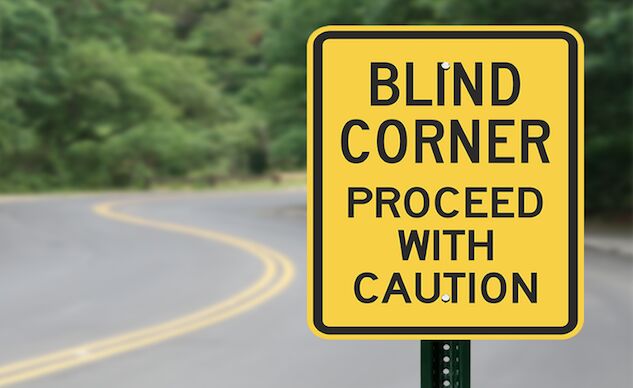 Riding a motorcycle on the street after you’ve become comfortable and proficient with its controls comes with its own set of obstacles and challenges, which are endless really, due to the constantly changing and/or unpredictable situations that can arise. There are a million different things a new rider will encounter on their motorcycle, but the most important thing you can do is be aware of your surroundings, pay attention and don’t let yourself get distracted. There’s too much at risk. The whole point of this New Rider: How To is navigating blind turns safely, and we’ll start with left-hand turns first. A blind left-hand turn is a little easier to navigate than a blind right-hand turn, because typically you can see further around the road thanks to the opposing lane. Does the road maintain a constant radius or tighten up into a decreasing radius turn? Does the camber remain the same or rob you of ground clearance and traction by going negative and tilting away from the center of the turn? Is there debris in the corner? The answers to all of these questions are hidden by the road itself. The best plan of attack is to slow down a little more than you think you need to and maintain a wider line at the entrance. That way you can adapt to a decreasing radius or dive in to clip the apex when you can see the corner’s exit. If you hug the inside line and the corner tightens up, you can be forced way wide at the corner’s exit – possibly with disastrous consequences. 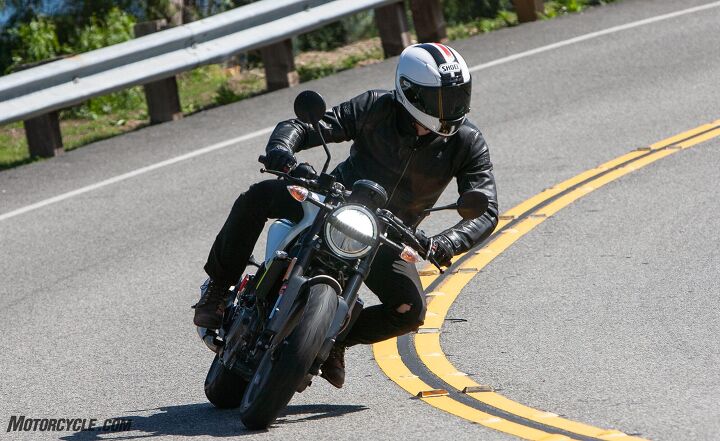 The most important key to navigating any corner is looking as far through the turn as possible and also where you want to go. Doing this will not only help steer the bike in the right direction, but also will allow you to see any oncoming vehicles, obstacles, debris in the road, etc. The most important key to navigating any corner is looking as far through the turn as possible and also where you want to go. Doing this will not only help steer the bike in the right direction, but also will allow you to see any oncoming vehicles, obstacles, debris in the road, etc.Once you’ve determined which way the road goes, you want to look out for vehicles coming the other way, and if they’re running wide. With big trucks, tractor trailers, busses or any auto with something in tow, these vehicles need to take turns wider than a passenger car due to the decreased turning radius of their trailing axles, and they run the risk of possibly running wide. As a motorcycle rider, the thing to be conscious of is where you position yourself in the lane. You always want to navigate a turn as fluidly as possible, following the line as described above, but you don’t want to hug the dividing line with your tires while leaned over because that will place your body in the opposing lane, and well, you know… We don’t want that. What you want to do is position yourself and your motorcycle still in the left-hand portion of the lane, but more towards the center, so that even while leaned over you’re clear of oncoming traffic. You’ll still have the rest of the lane to your right to work with should you need to adjust your line and/or run wider. Basically, you always want to have some sort of an escape plan or route should you need it. 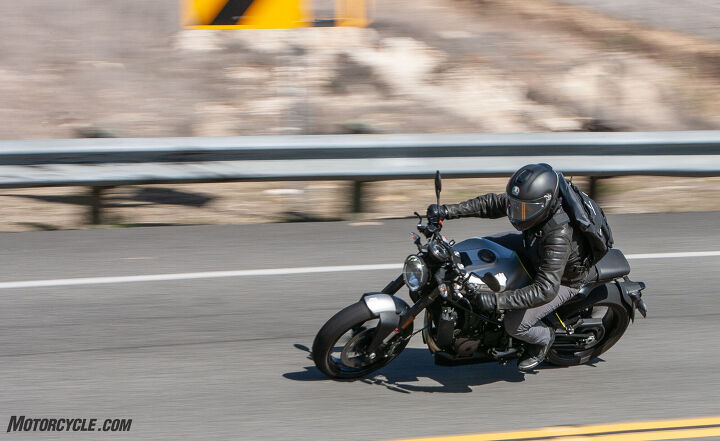 You always want to leave yourself some room within your lane to maneuver. You always want to leave yourself some room within your lane to maneuver.Additionally – and this goes for both left- and right-hand turns – you want to look as far through the turn as possible. Not only does this help you hold your line better, it also allows you to detect any oncoming obstacles as early as possible – be it another vehicle or simply debris on the road. Not looking and focusing as far through the turn could cause target fixation, and target fixation, if not immediately corrected, almost always ends poorly. When you look where you want to go, that’s where you go. If you find yourself running wide on a turn and looking at the side of the road, more often than not that’s where you’re headed – it’s an unfortunate phenomenon, but it works both ways. So look through the turn and ride at a slower pace you’re comfortable with. Speed will come naturally with seat time and practice. Like John Burns said in his Top 10 Ways to Stay Alive When Learning How to Ride, your riding buddies would much rather wait for you at the next light or intersection, rather than pull you out of a ditch. These same principles hold true for blind right-hand turns as well, however, the major difference is that you can’t see as far around the curve and you have less time to react. With blind right-hand turns you don’t have oncoming traffic to contend with, but this doesn’t make them any easier. Just like in a left-hand turn, you want to look as far around the bend as possible, and depending on how tight the turn is, you’ll want to position yourself in the right-hand portion of the lane, but again, more towards the center. This way you have room to maneuver to your left and right in the event there’s something in the road you’ll need to avoid. A perfect example of this is if you’re coming around a blind curve alongside a hill. Rocks, sand and dirt can roll down the hill and onto the road thanks to gravity. These are our enemies and they often get pushed and blown to the inside of turns. You come around a bend leaned over across a patch of sand and boom. You’re on the ground before you even know what happened. 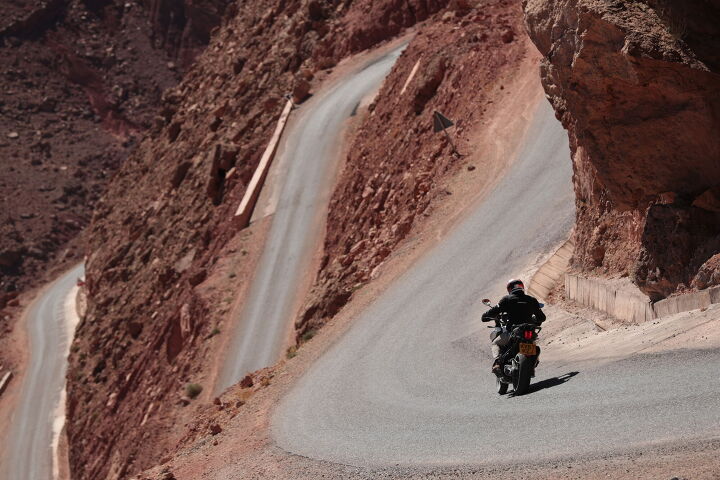 Here’s a perfect example of a blind right-hand curve with the added threat of rocks and debris that could have fallen from the side of the hill. Here’s a perfect example of a blind right-hand curve with the added threat of rocks and debris that could have fallen from the side of the hill.Another thing you can do eventually once you get more comfortable on your motorcycle, depending on the radius of the curve, is to take a late apex so that you can see as far around it as possible and then cut back inside and square-off the turn. This is more of an advanced racing pass technique, and it really depends on how the turn apexes, but it’s definitely an effective way to navigate a turn, and that goes for both right- and left-handers. Finally – and we must sound almost redundant at this point, but we can’t stress it enough, so we’re going to keep drilling it into your brain – be aware of wherever it is that you’re riding and the obstacles that come with the territory. If you’re in a residential neighborhood, watch for kids playing or cars leaving driveways. If you’re in town, watch for cars pulling out or opening their doors. If you’re in the woods or somewhere deer often cross the road, watch out for them. There’s almost always street signs to alert drivers of these sort of situations, but rarely do people pay attention to them anymore. Don’t be that guy. And after all, it’s your ass on the line… 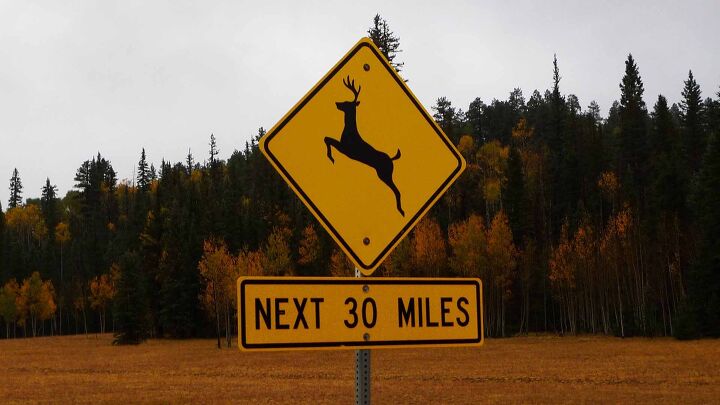 These types of signs are here to help you. Heed their warnings. These types of signs are here to help you. Heed their warnings.Riding motorcycles is one of the most fun and liberating things you can do. It obviously comes with its dangers, but truthfully, it’s all part of the rush. If you’re conscious and aware of these dangers, they can be mitigated and easily navigated as long as you stay focused. Now get out there, be safe and enjoy your two-wheeled freedom. The post New Rider: How to Navigate Blind Turns appeared first on Motorcycle.com. Click here for full story...
__________________________________________________
I'm a bot. I don't need no stinkin' signature... |
|
|

|
 |
 Similar Threads
Similar Threads
|
||||
| Thread | Thread Starter | Forum | Replies | Last Post |
| Blind Lorry Driver Annihilates Ducati (rider is fine) | akima | Videos | 6 | August 15th, 2015 10:05 AM |
| [sportrider - latest stories] - Riding Skills Series: Blind Turns at the Track | Ninjette Newsbot | Motorcycling News | 0 | November 12th, 2010 07:30 PM |
| [sportrider - latest stories] - Riding Skills Series: Blind Turns on the Street | Ninjette Newsbot | Motorcycling News | 0 | October 27th, 2010 11:30 AM |
| [topix.net] - Easy Rider, the original motorcycle road trip movie turns forty | Ninjette Newsbot | Motorcycling News | 0 | July 16th, 2009 09:50 AM |
| [motorcycle.com] - Easy Rider turns 40 | Ninjette Newsbot | Motorcycling News | 0 | July 15th, 2009 03:50 PM |
| Thread Tools | |
|
|